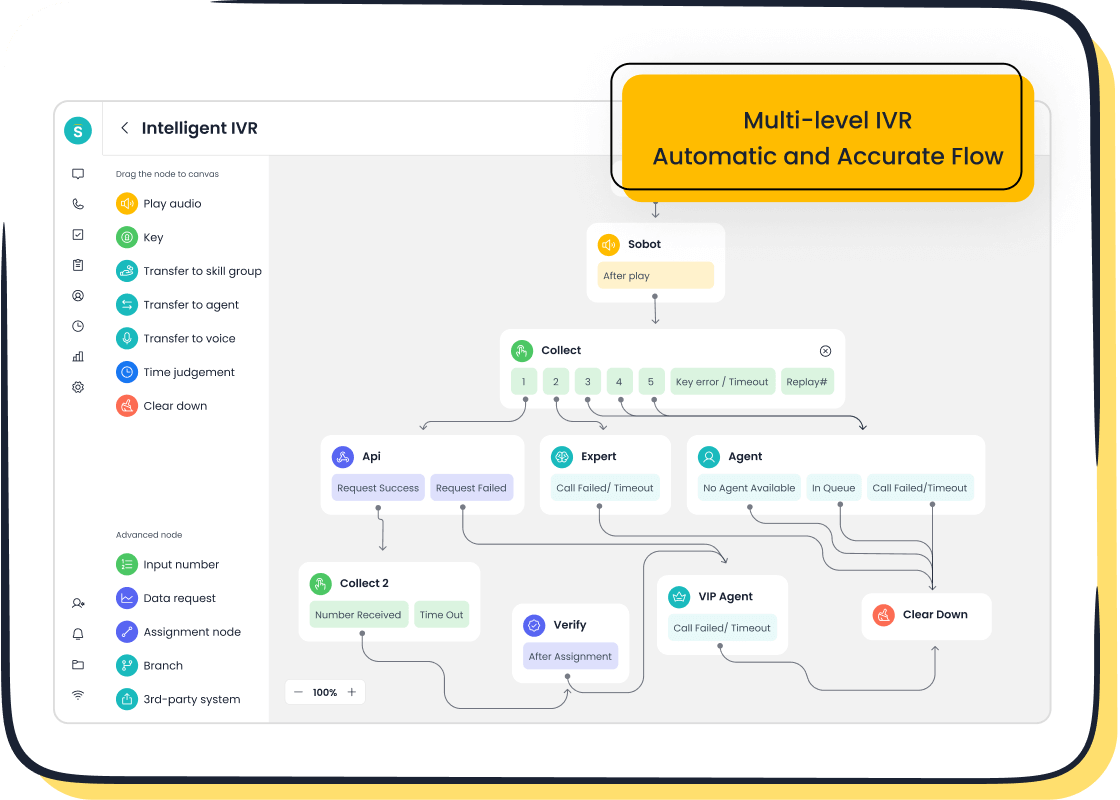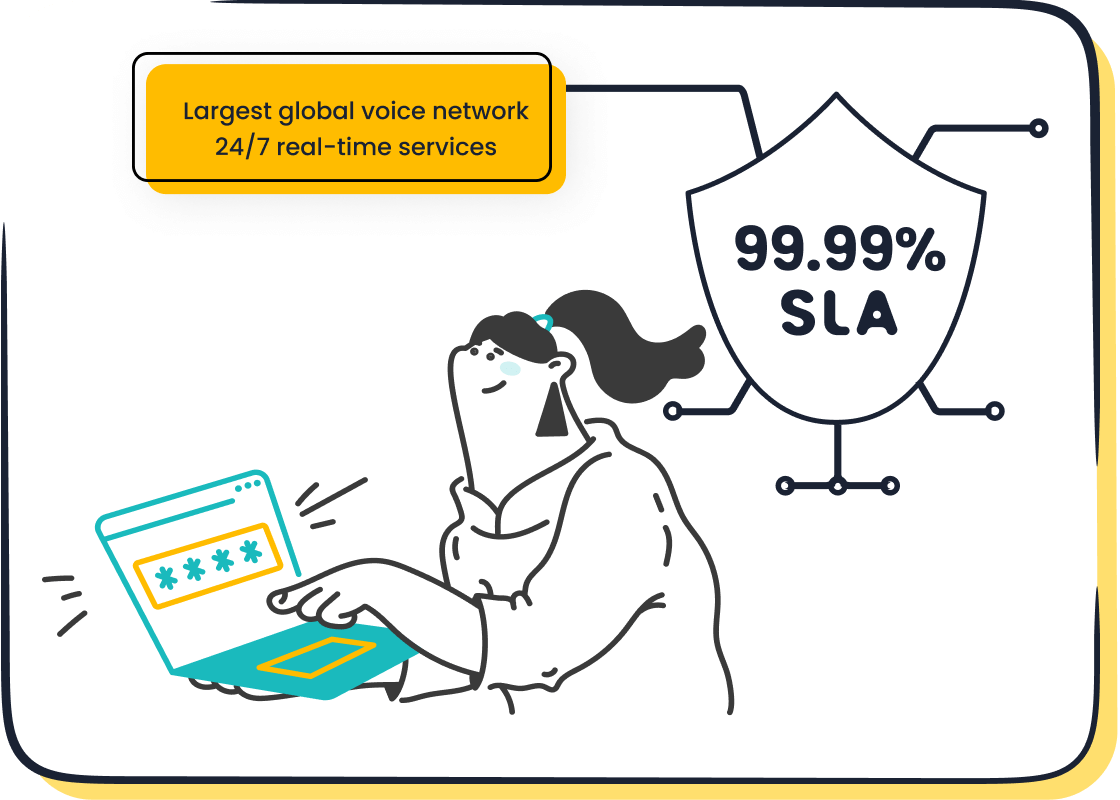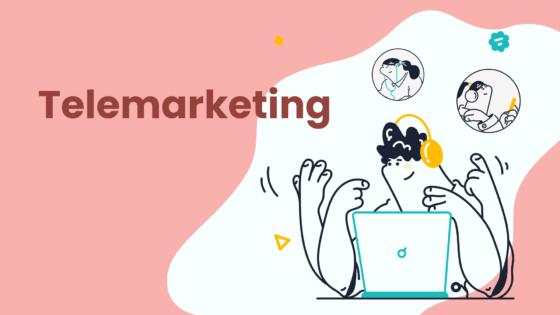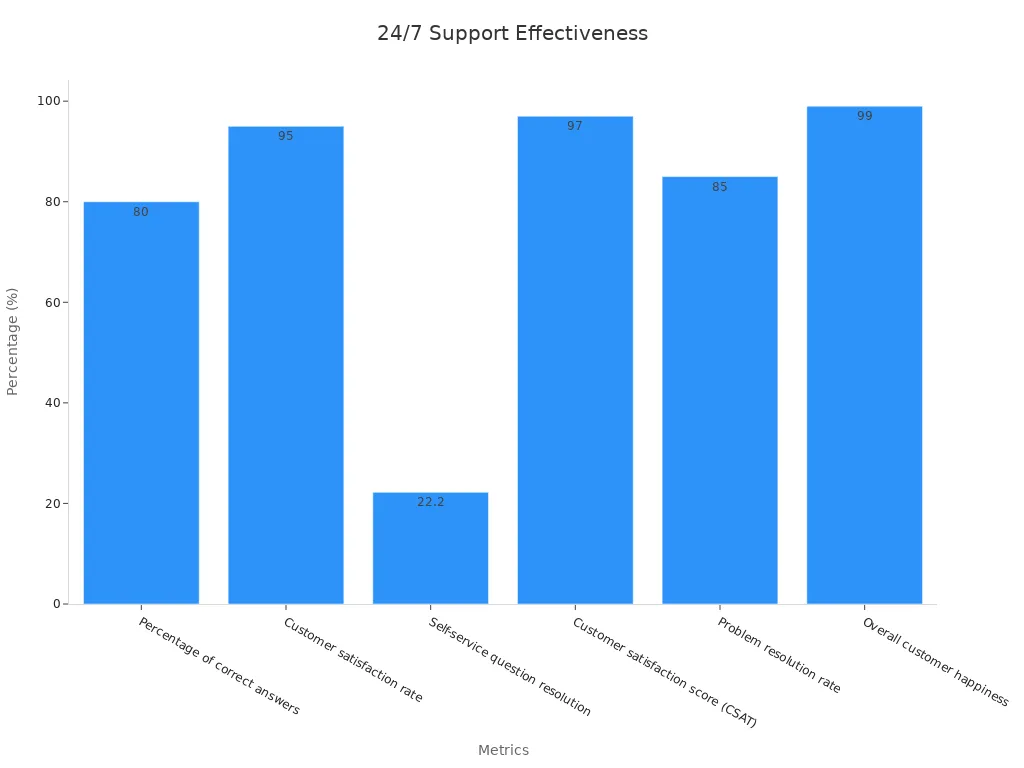How Businesses Can Achieve Long-Term Customer Satisfaction

Imagine walking into a store where the staff knows your name, remembers your preferences, and treats you like a valued guest. You’d probably want to come back, right? That’s the magic of long-term customer satisfaction—it keeps customers returning and talking positively about your brand. Nearly three-quarters of customers say exceptional service is the key to their loyalty, and up to 75% trust brands with glowing reviews. On the flip side, 60% avoid businesses with negative comments. When you invest in creating great experiences, you can see an 80% revenue boost.
Customer satisfaction and customer retention strategies go hand in hand. Satisfied customers are more likely to stick around, spend 67% more than new ones, and recommend your business to others. This loyalty doesn’t just improve your bottom line but also enhances metrics like return on assets and net profit margin. Whether you’re a small business or a global brand like Sobot’s client Samsung, prioritizing satisfaction helps you build lasting relationships and achieve sustainable growth.
Understanding Customer Satisfaction and Customer Retention Strategies
Defining Customer Satisfaction and Its Role in Retention
Customer satisfaction is all about how happy your customers feel after interacting with your business. It’s not just about the product or service you offer but also the experience you create. Did you know that satisfaction often comes down to small moments? A quick response to a query or a clear return policy can make a big difference. When you meet or exceed expectations, you build trust. This trust encourages loyalty, making customers less likely to switch to competitors.

To understand satisfaction better, businesses use tools like surveys and focus groups. These methods help uncover what customers value most. For example, Sobot’s Voice/Call Center ensures smooth communication, which can significantly enhance satisfaction. By focusing on these interactions, you can create a retention strategy that keeps customers coming back.
The Importance of Customer Retention for Business Growth
Customer retention is the secret sauce for sustainable growth. Why? Because keeping existing customers is far more cost-effective than acquiring new ones. In fact, acquiring a new customer can cost up to five times more than retaining one. Plus, loyal customers spend 67% more than new ones. They’re also more likely to recommend your business to others, creating a ripple effect of growth.
Retention strategies like loyalty programs or personalized offers can make a huge impact. For instance, Sobot’s marketing solutions help businesses engage customers through tailored campaigns, boosting retention rates. Remember, even a 5% increase in retention can lead to a 25-95% jump in profits. That’s a strategy worth investing in!
Common Standards for Measuring Customer Satisfaction
How do you measure satisfaction effectively? Businesses often rely on key metrics to gauge how well they’re doing. These include overall satisfaction scores, Net Promoter Scores (NPS), and repurchase intentions. NPS, for example, measures how likely customers are to recommend your brand. It’s a simple yet powerful way to understand loyalty.
Another approach is attribute satisfaction, which evaluates specific aspects of your product or service. For example, how important is delivery speed to your customers? Tools like Sobot’s unified workspace can help track these metrics seamlessly. By analyzing this data, you can refine your strategies and ensure your customers remain satisfied.
Personalizing Customer Experiences to Boost Customer Loyalty

Leveraging Customer Data for Tailored Interactions
Personalized customer experiences are no longer optional—they’re expected. In fact, 80% of customers are more likely to do business with a company that offers tailored interactions. By leveraging customer data, you can create meaningful customer experiences that resonate on a personal level. For example, tracking purchase history or browsing behavior allows you to recommend products or services that align with individual preferences. This approach not only enhances the customer experience but also builds trust and loyalty.
Consider how companies like Company A and Company B have successfully used customer data to improve retention and conversions:
| Company | Challenge | Solution | Outcome |
|---|---|---|---|
| Company A | High churn rate | Integrated customer analysis tools | 20% increase in customer retention |
| Company B | Low conversion rates | Employed customer analysis tools to track interactions | 30% improvement in conversion rates |
Sobot’s unified workspace simplifies this process by consolidating customer data into one platform. This enables you to analyze interactions and deliver personalized communication effortlessly. When you use data effectively, you’re not just meeting expectations—you’re exceeding them.
Using Sobot's Voice/Call Center for Personalized Communication

Personalized communication is a game-changer for customer satisfaction. Sobot’s Voice/Call Center empowers businesses to connect with customers in a way that feels personal and genuine. Features like intelligent IVR and AI-powered Voicebots allow you to greet customers by name, understand their needs, and route them to the right agent. This creates a seamless and satisfying experience.
The results speak for themselves. Businesses using Sobot’s Voice/Call Center have achieved a 97% customer satisfaction rate and a 30% increase in agent efficiency. Additionally, metrics like a 57% repurchase rate and an 83% chatbot resolution rate highlight the effectiveness of personalized communication in driving customer retention.
When you prioritize personalized interactions, you’re not just solving problems—you’re building relationships. Customers feel valued, which encourages them to return and recommend your brand to others.
Enhancing Customer Engagement Through Multichannel Strategies
In today’s digital world, customers interact with brands across multiple channels. Whether it’s email, social media, or live chat, they expect a consistent and personalized experience. Multichannel strategies are essential for meeting these expectations. In fact, 86% of marketers believe that multichannel approaches enhance customer engagement, and companies using these strategies report an impressive 89% retention rate.
Sobot’s marketing solutions make it easy to implement multichannel strategies. By integrating platforms like WhatsApp, SMS, and voice, you can engage customers wherever they are. Advanced analytics help you track interactions and refine your approach, ensuring every touchpoint adds value.
Customers who experience consistency and personalized attention are more likely to remain engaged, make purchases, and recommend your brand to others.
By adopting a multichannel strategy, you’re not just reaching customers—you’re connecting with them in ways that matter. This approach not only boosts customer loyalty but also drives long-term growth.
Leveraging Feedback for Continuous Improvement
Collecting Actionable Customer Feedback
Gathering customer feedback is one of the most effective ways to understand what your customers truly want. When you ask for their opinions, you show them that their voices matter. This simple act builds trust and strengthens your relationship with them. Plus, customers who feel heard are more likely to stick around, boosting customer retention.
To collect meaningful feedback, focus on actionable metrics. Tools like Net Promoter Score (NPS), Customer Satisfaction (CSAT), and Customer Effort Score (CES) are great starting points. Here’s a quick breakdown:
| Metric | Description |
|---|---|
| NPS | Measures how likely customers are to recommend your service. |
| CSAT | Assesses overall satisfaction with your product or service. |
| CES | Evaluates how easy it is for customers to interact with your company. |
Keep your surveys clear and concise. Send them right after key interactions to capture fresh insights. Mixing question formats—like ratings and open-ended questions—can help you gather both quantitative and qualitative data. Sobot’s unified workspace simplifies this process by consolidating customer interactions, making it easier to gather customer feedback seamlessly.
Analyzing Feedback to Identify Key Pain Points
Once you’ve collected feedback, the next step is to dig deep and uncover what’s really bothering your customers. Look for recurring themes in their responses. For example, are multiple customers mentioning long wait times or unclear instructions? These patterns often point to critical pain points.
Using tools like sentiment analysis or AI-powered categorization can make this process faster and more accurate. Here are some proven methods to identify pain points:
- Mapping Pain Points: Trace the customer journey to spot areas of friction.
- Competitive Analysis: Compare your feedback with competitors to find shared challenges.
- Cognitive Walkthroughs: Simulate customer tasks to uncover usability issues.
Platforms like Hotjar or Otter.ai can also help you analyze feedback effectively. By identifying these pain points, you can prioritize improvements that will have the biggest impact on customer satisfaction.
Implementing Changes to Improve Customer Satisfaction
Feedback is only valuable if you act on it. When customers see their suggestions implemented, they feel valued and are more likely to stay loyal. In fact, businesses that act on feedback report a 62% increase in monthly revenues and a 54.5% boost in profits.
Start by addressing the most common complaints. For instance, if customers frequently mention slow response times, consider using Sobot’s AI-powered Voice/Call Center. Its intelligent routing and 99.99% uptime ensure faster, more efficient communication. This kind of improvement not only enhances satisfaction but also reduces customer churn.
Remember, even small changes can make a big difference. Whether it’s updating your website for easier navigation or offering personalized discounts, these adjustments show your customers that you’re listening. Over time, this strategy builds trust and fosters long-term loyalty.
Building Trust and Loyalty Through Effective Customer Retention Strategies
Delivering Consistent Quality and Value
Consistency is the cornerstone of building trust with your customers. When you deliver high-quality products and services every time, you create a sense of reliability that strengthens your relationships. Customers want to know they can count on you, whether they’re making their first purchase or their tenth.
Think about brands like Samsung, which achieved a 97% customer satisfaction rate by consistently providing excellent service through Sobot’s all-in-one contact center solution. This kind of reliability not only boosts satisfaction but also encourages long-term relationships. By focusing on consistent quality, you show your customers that you value their trust.

To maintain this consistency, consider using tools like Sobot’s Voice/Call Center. Its 99.99% uptime ensures smooth communication, while features like intelligent IVR and AI-powered Voicebots enhance the customer experience. When you prioritize quality and value, you lay the foundation for strong, lasting connections.
Creating Loyalty Programs to Boost Customer Retention
Loyalty programs are a proven strategy for increasing customer retention. They reward your customers for their continued support, making them feel appreciated and valued. But not all loyalty programs are created equal. To be effective, they need to be strategic and tailored to your audience.
Studies show that loyalty programs significantly impact retention. For example:
| Aspect | Findings |
|---|---|
| Study Focus | Malaysian national car sector |
| Sample Size | 313 Malaysian national car users |
| Methodology | Explanatory, quantitative research using a questionnaire and structural equation modeling |
| Key Finding | Significant positive impact of loyalty programs on customer retention |
| Mediation Effects | Brand association fully mediates the relationship between loyalty programs and customer retention. |
To make your loyalty program stand out, focus on personalization. Offer rewards that align with your customers’ preferences. Embrace trends like gamification to keep them engaged. Sobot’s marketing solutions can help you design and manage strategic loyalty programs that drive retention and foster long-term relationships.
Transparent Communication and Proactive Problem Solving
Transparency is more than just a buzzword—it’s a powerful strategy for building trust. Customers value honesty and clarity. Brands like Starbucks and Patagonia have shown that transparency can lead to increased customer loyalty and even higher profits. For instance:
| Brand | Evidence | Outcome |
|---|---|---|
| Starbucks | 86% of consumers value transparency; 73% of Millennials pay more for it. | Increased customer trust and satisfaction due to transparency in sourcing and sustainability. |
| Patagonia | Commitment to environmental activism led to a 40% sales increase since 2016. | Demonstrated that integrity can lead to profitability. |
Proactive problem solving goes hand in hand with transparency. Addressing issues before they escalate shows your customers that you care. For example:
Proactive support means identifying and addressing issues before customers need to reach out. This approach has become essential for building trust in the customer-business relationship and is a hallmark of great consumer service.
Using tools like Sobot’s AI-powered Voice/Call Center, you can anticipate customer needs and resolve issues quickly. This not only improves satisfaction but also strengthens your relationships. When you communicate openly and solve problems proactively, you create a loyal customer base that sticks with you for the long haul.
Proactive Customer Support for Long-Term Satisfaction

Anticipating Customer Needs with AI-Powered Tools
Imagine if you could predict what your customers want before they even ask. That’s the power of AI-powered tools. These tools analyze customer behavior, purchase history, and preferences to anticipate their needs. This proactive approach not only enhances customer satisfaction but also strengthens customer retention.
Here’s how AI can transform your strategy:
- Personalized Marketing Strategies: AI helps you create campaigns that align with customer preferences, leading to higher conversion rates and better ROI.
- Enhanced Customer Satisfaction: By anticipating needs, you provide a smoother experience, fostering loyalty and repeat business.
- Proactive Support: AI analyzes trends to predict future customer demands, ensuring you’re always one step ahead.
Companies like XYZ Corporation and ABC Inc. have already seen success with AI. XYZ Corporation implemented AI chatbots to provide instant support, while ABC Inc. used AI-driven voice assistants for personalized guidance. Both companies reported improved customer satisfaction and stronger retention rates.
Sobot’s AI-powered Voice/Call Center takes this a step further. It uses intelligent IVR and AI Voicebots to recognize customer intent and provide tailored solutions. This ensures every interaction feels personal and efficient, making your customers feel valued.
Offering 24/7 Support with Sobot's Voice/Call Center
Your customers don’t operate on a 9-to-5 schedule, and neither should your support. Offering 24/7 assistance ensures that help is always available, no matter the time or place. This level of accessibility is crucial for maintaining customer satisfaction and retention.

Sobot’s Voice/Call Center is designed to provide round-the-clock support. With features like global number availability and a 99.99% uptime, your customers can reach you anytime. The platform also includes AI-powered Voicebots and smart call routing, ensuring quick and accurate resolutions.
Here’s a snapshot of how 24/7 support impacts customer satisfaction:
| Metric | Value |
|---|---|
| Percentage of correct answers | 80% |
| Customer satisfaction rate | 95% |
| Self-service question resolution | 22.2% |
| Customer satisfaction score (CSAT) | 97% |
| Problem resolution rate | 85% |
| Overall customer happiness | 99% |

By offering 24/7 support, you show your customers that you’re always there for them. This builds trust and encourages long-term loyalty.
Training Teams to Provide Exceptional Service
Even the best tools can’t replace the human touch. That’s why training your team to deliver exceptional service is essential. Well-trained employees can handle customer interactions with confidence, empathy, and efficiency, ensuring a positive experience every time.
Effective training programs focus on practical skills and real-world scenarios. For example:
- Participants rated training usefulness between "6" (very) and "7" (extremely).
- Post-training, employees demonstrated improved skills in handling customer queries.
- Training protocols enhanced team performance without disrupting customer services.
Sobot supports this by providing a unified workspace where agents can access customer data and communication tools in one place. This simplifies their workflow and allows them to focus on delivering exceptional service.
When your team feels empowered and prepared, it reflects in their interactions. Customers notice the difference, which boosts satisfaction and retention. Investing in your team is a strategy that pays off in the long run.
Achieving long-term customer satisfaction isn’t just a goal—it’s a journey. You’ve seen how strategies like personalizing experiences, leveraging feedback, and offering proactive support can transform your customer relationships. By focusing on consistent quality, transparent communication, and loyalty programs, you can build trust that lasts.
Take a look at how these strategies work together:
| Strategy | Description | Statistical Method |
|---|---|---|
| Data-Driven Analysis | Leverage data to extract meaningful insights and identify trends. | Regression analysis to predict customer behavior based on variables like service response time. |
| Customer Feedback Integration | Systematically gather and analyze customer opinions to inform strategies. | Surveys combining quantitative and qualitative feedback to understand emotional drivers. |
When you prioritize customer satisfaction, you’re not just meeting expectations—you’re exceeding them. Start small. Use tools like Sobot’s Voice/Call Center to personalize interactions or gather actionable feedback. Every step you take brings you closer to creating experiences your customers will love.
FAQ
How can I measure customer satisfaction effectively?
You can use tools like Net Promoter Score (NPS), Customer Satisfaction Score (CSAT), or Customer Effort Score (CES). These metrics help you understand how happy your customers are and identify areas for improvement.
What makes personalized communication so important?
Personalized communication shows customers you care about their needs. It builds trust and loyalty by making every interaction feel tailored to them. Tools like Sobot’s Voice/Call Center make personalization easy and effective.
Why is customer retention more cost-effective than acquisition?
Retaining customers costs less because you don’t need to spend on marketing or onboarding. Loyal customers also spend more and recommend your business to others, boosting growth without extra effort.
How does multichannel engagement improve customer satisfaction?
Multichannel engagement lets you connect with customers wherever they are. It ensures consistent experiences across platforms like WhatsApp, SMS, and voice, making interactions smoother and more satisfying.
What role does feedback play in improving customer satisfaction?
Feedback helps you understand what your customers want. When you act on their suggestions, you show them their opinions matter. This builds trust and keeps them coming back.
See Also
10 Strategies to Enhance Customer Satisfaction in Live Chats
The Role of Chatbots in Improving E-commerce Satisfaction
2024's Leading Customer Service Software Solutions Reviewed
